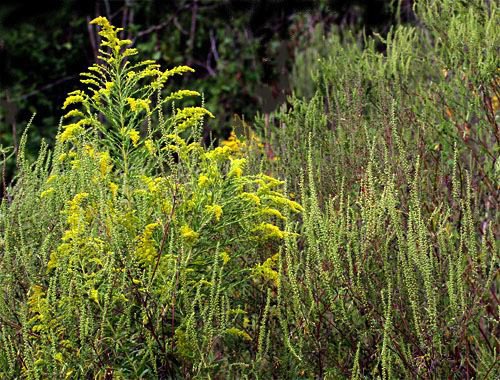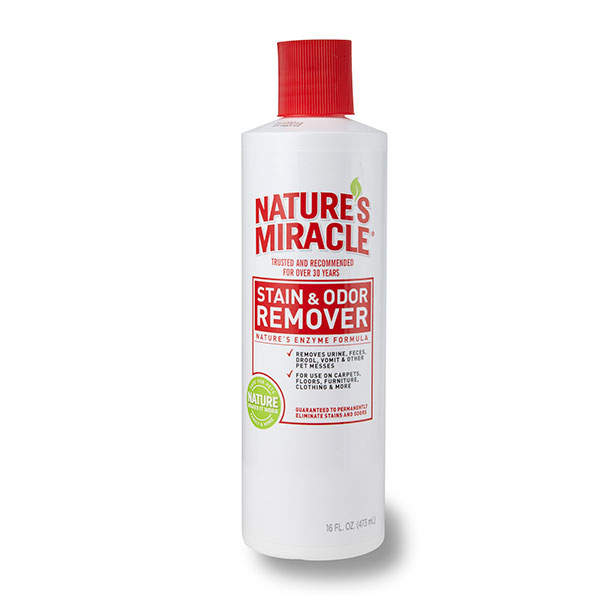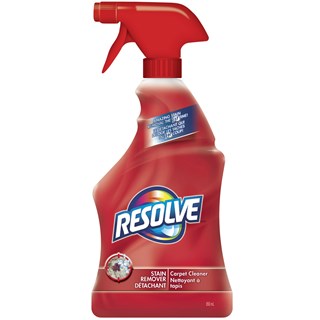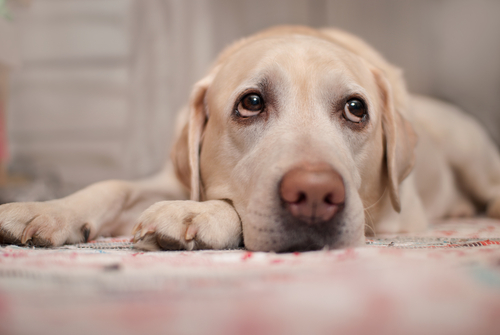If you’re reading this post, you’ve likely read the first two posts (post 1, post 2) in this series about ragweed allergies in dogs. If you haven’t, be sure to check them out!

We’re talking about ragweed and it’s effect on dogs. The crazy seasonal allergy characterized by the itching, scratching, chewing, gnawing behaviour that sets in with your dog in late summer, between August and September, finally settling down with the first frost that typically arrives arrives in the late- September or October timeframe.
In this article, we’re going to jump right in, assuming you’ve read our first two posts, and now have some knowledge and experience with this allergy with your dog.
We’re going to start from the perspective that you’ve made the decision to put your dog on medication (the symptoms are serious enough), and that you’ve likely started a medical regimen of the very common Vanectyl-P medication (although, we note that there are other medications on the market).
If you put your dog on the Vanectyl-P, there are a number of side-effects.
Vanectyl-P (where the P stands for Prednisolone) can be hard on your dog’s immune system.
As such, you’ll want to try to minimize the chance of injury/illness while your dog it’s on the medication, as sickness or injury may have a more significant effect during the time when your dog is on the medication and has a compromised immune system.
Overall, the side-effects are manageable, but the key is that you have to stay on top of them so they don’t become problematic.
Let’s take a look.
Side-effect: Lots of pee
One of the main side-effects of Vanectyl-P is that your dog feels like it has a dry mouth and is thirsty. As a result, it will want to drink a lot of water.
By “a lot,” we mean: tons, gallons, and then some more.
Particularly in the early, higher dose stages of the medical regimen (doses taper off once a sufficient amount of the medication has been established in your dog’s system).
Drinking lots of water is not a problem in and of itself. Except that the result is your dog needing to pee much more frequently, and in larger volumes.
Letting your dog out for a bathroom break will become a frequent occurrence, and this reality might affect certain parts of your life. To prevent accidents in your house, you’ll want to take every chance you can to let your dog outside.
Night time routine
As the evening moves on towards bedtime, we find it helpful to reduce the amount of water available to our dog. The key to remember is that your dog is not dehydrated, it just feels very thirsty because of the medication. We give her several opportunities to go outside, and for her last drink of water, just give her a bit in her bowl.
Be prepared to have your dog wake up to go out in the middle of the night. Thankfully, Juno lets us know when she needs to go out, and doesn’t take it upon herself to just go in the house.
If your dog doesn’t tend to let you know, we suggest setting an alarm for a middle-of-the-night trip outside. If your dog can make it through the night, you may find it wakes you up a bit earlier than normal, or you might want to set your alarm a bit earlier in the morning than normal. An immediate trip outside is probably in order as soon as your dog is up.
Day time routine
If you’re home during the day, you’ll probably find that your dog simply drinks more water and needs to go out more frequently.
Dealing with these needs is pretty easy if it’s a weekend or you’re at home from work. You may have to adjust your errand schedule to get home in a shorter amount of time, depending on how long your dog can go before needing to go outside.
If you’re going to be away for the day, you’ll want to minimize the chance of your dog having a bathroom accident in the house. Here are some suggestions for you to consider.
8 strategies for minimizing daytime house accidents while your dog is on medication during allergy season
1. Make sure your dog has had enough water to drink to be hydrated, but reduce the amount you give your dog before leaving for the day.
2. Try to get home during the day if possible, e.g., over your lunch break if you can.
3. Try to get home at the end of the day as soon as you can (maybe you could even work from home, or are fortunate to have flexible working hours. This world be a great time to take advantage of those benefits).
4. Consider having someone come over to let your dog out during the day (e.g., neighbour, family, friend, professional dog-sitter or dog-walker).
5. Consider trading off work timings with your partner or spouse or other family member so one of you can stay home a bit longer in the morning and someone can get home a bit earlier in the afternoon or evening, minimizing the time that your dog is left alone during the day in allergy season.
6. Consider taking your dog to day-care or a boarder during the day (note that there are likely some financial costs and timing considerations–such as drop-off and pick-up times–with these options).
7. Consider having your dog stay with someone else for the day (family member or friend).
8. If you find that your dog does have an accident in the house, you might consider using puppy training pads, or lay out some towels, for the duration of the time your dog is on the medication. You may want to try setting up this space on some type of flooring other than carpeted areas to minimize any additional clean up that needs done, as well as the associated costs (think carpet cleaning or renting a steam cleaner).
Notes on mess cleanup
If you do find your dog has accidents and you have clean up to do, we’ve found the following products useful to have on hand: Nature’s Miracle and Resolve (together, these products help with stain and odour removal, discourage re-soiling, and are safe around children). These products are probably available from your local pet or general supply store.


We also keep a “mess kit” of clean-up items at the ready, including paper towels, baking soda to help with odour absorption, cloths and other towels, as well as plastic bags for disposal of the paper towels (so from time-to-time, remember to pick some up from your local grocery store; you could also use paper bags for a more environmentally-friendly alternative). We’ve found that we have to do a bit more laundry (towels) and vacuuming (baking soda) if Juno’s had an accident(s) in the house during allergy season.
Side-effect: Lethargy

In our experience, the medication has made Juno more lethargic and reduced her energy.
We’ve also noticed that this side effect has increased as she’s gotten older. This side effect isn’t particularly problematic, but we do certainly notice the change in her, and the added lethargy is definitely out of character for her.
Where we do notice the lethargic effects most is in our walk routine with her (shorter walks, less frequent, lower energy while on the medication and in general around the house). Juno also tends to be affected by the heat, and the weather is usually pretty warm here in August and September, so the slow down is magnified when she’s on the medication).
Side-effect: Drawn face
Juno’s face tends to look grey, with darker bags under her eyes while she’s on the medication. As we wrote about in our first post about dogs and ragweed allergies, the Vanectyl-P can draw potassium from the body leading to weakness, and dogs having trouble standing. We discovered the solution of bananas (high in potassium to help bring the levels back up in our dog), contacted our vet, and reduced the dosage right away to take care of the problem.
Overall, we find our dog looks and behaves like she’s just not feeling too well. We find she tends to look to us for reassurance. Be sure to spend lots of time with your dog while on the medication. And who doesn’t want extra hang-out cuddle time with their dog? It’s very much like helping people feel better when they’re sick.
Extra notes on cleanup, and preventing humiliation
You don’t want to have your dog start thinking it can always go to the bathroom in the house.You want to make sure your dog still recognizes that the behaviour is wrong.
A clear signal of this knowledge remaining in place is when your dog continues to signal to go outside when you’re home. If your dog starts relieving itself inside while you’re home, it may be starting to think that that behaviour is acceptable.
Remember, it’s humiliating for your dog to relieve itself in the house when it’s old enough and well-trained to know it shouldn’t do that.
Your dog can’t help its circumstances, since you have discretion over its medication, water, and outdoor time. So, it’s incumbent on owners to help their dog through these unusual circumstances and prevent humiliation.
Don’t get angry or take your frustration out on your dog. It’s likely the medication causing them to have to relieve themselves inside, even though they know they shouldn’t be doing that. They can’t help themselves, and you’re not there to let them out.
Do what you can to help your pup out while it’s on this medication. Adjust schedules and water intake to the best of your ability. Practice patience, and keep your eye on the prize, as the season is relatively short-lived.
You and your dog will be happier and healthier for you doing so.
Thanks for taking such great care of your dog. After all, isn’t that what it’s all about?
**********
Confidence. Forethought. Leadership. Mastery.
Get at it. It’s in you.
If you found this article useful, please share it, leave a comment, or pass it along to someone who would enjoy it.
And if we left something out, we’d appreciate hearing your suggestions about what’s worked for you.
We invite you to continue checking out what we’re working on at www.lifeinthedoglane.com – our site about mastery of your life. With your dog at your side.
Sign up to our mailing list for updates.
And as always, thanks for reading. We’re glad to have you with us.
Twitter: @LifeInDogLane @adamgemackenzie
I realize that this information is quite dated, but has there been any new developments in the ragweed allergy problem? Ragweed is in great demand in my area of PA and my hunting dogs are going nuts. Our vet always blamed it on the dog food, I noticed it was the ragweed. Although I’m not for much modern medications, we tried allergy pills with no relief. I also realized that heat makes it worse for them. I made a spray of chamomile and lavender and sprayed it on them and after the first day one dog showed signs of relief. So I’m going to continue use and hope for the best for the other. I hope and pray that all your itchy loved ones get relief as well with what you are doing. Best wishes to everyone ❤️.